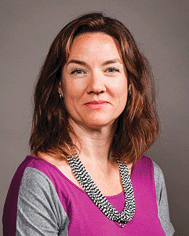Journal of Materials Chemistry B themed issue: stem cells
Laura J.
Suggs
a and
Kacey G.
Marra
b
aDepartment of Biomedical Engineering, The University of Texas at Austin, 107 W. Dean Keeton Street Stop C0800, Austin, TX 78712, USA. E-mail: laura.suggs@mail.utexas.edu
bDepartment of Plastic Surgery, University of Pittsburgh, 200 Lothrop Street, 1655 E. BST, Pittsburgh, PA 15261, USA. E-mail: marrak@upmc.edu
 Laura J. Suggs |
 Kacey G. Marra |
Stem cells are undifferentiated cells that have the dual properties of either self-renewal or commitment towards diverse cell types depending on contextual cues. In this special issue, we consider both stem cells from the adult organism, which are more restricted as far as their differentiation potential, as well as pluripotent stem cells, which have the ability to differentiate towards all of the cell types within the adult. All stem cells have the potential to respond to physiologic or environmental signals in order to drive either self-renewal or differentiation. Furthermore, it is known that a certain amount of plasticity exists whereby stem cells from a particular tissue of origin can give rise to cell types of other tissues, thus indicating that they can switch cell fate.1
The differentiation and plasticity of stem cells can be controlled, in part, by the local cellular microenvironment. For example, it is known that stem cells can be induced to proliferate and transdifferentiate in response to injury.2 Another example of the importance of the milieu is the role of the microenvironment in cancer development. Ghajar et al. demonstrated that a stable microvasculature constitutes a dormant niche, whereas sprouting neovasculature sparks micrometastatic outgrowth.3 Indeed, Bissell and her team have published a number of seminal papers determining that the microenvironment can control cell fate, particularly in the mammary gland.4 Also, it has been shown that neural stem cells, when mixed with mammary epithelial cells and placed in epithelia-free fat pads of immunocompromised female mice, were redirected to exhibit mammary epithelial phenotype and function.5 This study supports the concept that the tissue microenvironment is able to redirect the intrinsic nature of a tissue-specific stem cell. Taken together, these studies emphasize the importance of the role of the microenvironment on the function and fate of stem cells both in development and disease.
This issue focuses on the role of the insoluble matrix in decisions regarding stem cell fate and function, a focus of intense research activity over the past 10 years. Biomaterial properties may serve to influence the forces that cells are able to exert on their substrate. In particular, the forces that mesenchymal stem cells can exert on surfaces with different physical properties can serve to drive differentiation.6 It is known that the binding of cell surface receptors, organization of focal adhesion sites and development of intracellular traction forces can drive differentiation in a matrix-dependent manner.7 While much of our understanding of cell–biomaterial interactions comes from the use of two-dimensional substrates, moving towards matrix systems with more controlled complexity (dimensionality, temporal dynamism, synergy with biologic processes, etc.) will better approximate the cellular microenvironment.
Our understanding of how stem cells interact with their biomaterial substrate has evolved from one that is merely observational towards a more nuanced mechanistic description. In particular, the integrins and cell surface receptors (Guelcher et al., DOI: 10.1039/C5TB02747K) are elucidated in this special issue, along with a greater understanding of how materials can act synergistically with growth factor presentation (Guldberg (DOI: 10.1039/C5TB02471D), McDevitt (DOI: 10.1039/C5TB02575C) and Roy (DOI: 10.1039/C5TB02644J) and their co-workers). A molecular description of the dependence of stem cells on their structural microenvironments will allow the field to progress towards more precisely designed materials with greater control over cell fate decisions. Engineered biomaterials that provide robust and reproducible cell function will then lead to advances in regenerative medicine, tissue engineering and drug discovery.
In this issue, studies also look at other aspects of microenvironmental control from the biomaterial. In particular, the local oxygen concentration is known to have a profound effect on stem cell fate. For example, the relatively low oxygen tension found in bone marrow stimulates self-renewal of mesenchymal stem cells.8 Other relevant examples can be found in development, wound healing and cancer progression. It is therefore of great interest to be able to both understand (Leach et al., DOI: 10.1039/C5TB02701B) and control the oxygen availability locally (Grayson et al., DOI: 10.1039/C5TB02635K, and Guldberg et al., DOI: 10.1039/C5TB02471D). Other features that may act synergistically with the biomaterial substrate include mechanical loading (Bryant and co-workers, DOI: 10.1039/C6TB00006A) and the aforementioned growth factor presentation.
In harnessing biomaterials for controlling stem cell fate and function, it is critical to have control over the micro- and nanoscale chemistry and physical features. Designed substrates can control cellular organization, particularly those cells that rely on spatial organization in order to express their differentiated function (Parker et al., DOI: 10.1039/C6TB00324A). Biomaterials can also control the relative tendency for cells to aggregate, with cell–cell contact contributing towards differentiation in a host of biologic processes (Alsberg (DOI: 10.1039/C6TB00064A), Boyan (DOI: 10.1039/C6TB00035E) and Guldberg (DOI: 10.1039/C5TB02471D), and their co-workers). Biomaterials can also maintain multiple cell types in their proper three-dimensional orientation for improved phenotypic expression and performance (Roy et al. (DOI: 10.1039/C5TB02644J), Gerecht et al. (DOI: 10.1039/C6TB00024J) and Khademhosseini et al. (DOI: 10.1039/C5TB02745D)). Control of substrate properties at the molecular level is likely an enabling technology for robust stem cell engineering. Nanoparticles in particular may be able to control cellular differentiation either directly or via presentation of soluble signals (Candiello (DOI: 10.1039/C5TB02428E), Lu (DOI: 10.1039/C6TB00509H) and their co-authors).
Applications of biomaterials in stem cell engineering are generally broad, but centers of research activity are largely driven by clinical need. Orthopedic applications are well-represented in this special issue due to the potential of adult stem cells to differentiate towards cells of the mesenchyme including bone and cartilage (Guelcher (DOI: 10.1039/C5TB02747K), Bryant (DOI: 10.1039/C6TB00006A), Lu (DOI: 10.1039/C6TB00509H), Guldberg (DOI: 10.1039/C5TB02645H) and Khademhosseini (DOI: 10.1039/C5TB02745D) and their co-workers). Cardiovascular applications are also described in this issue due to the prevalence of disease. Research is active both in tissue engineering as well as in disease modeling of vascular structures including blood vessels (Gerecht et al., DOI: 10.1039/C6TB00024J, and Varghese et al., DOI: 10.1039/C5TB02658J) and myocardium (Parker and co-workers, DOI: 10.1039/C6TB00324A), as well as blood cells (Roy et al., DOI: 10.1039/C5TB02644J). Stem cell applications requiring differentiation towards endoderm (Candiello (DOI: 10.1039/C5TB02428E) and Hay (DOI: 10.1039/C6TB00331A), and their co-workers) and neural tissue (Leach et al., DOI: 10.1039/C5TB02701B) are also of great clinical need. Our intent for this issue was to select examples of the utility of both adult and pluripotent cell types for a wide variety of applications, while illustrating the key role that biomaterials and their controlled chemistries play in driving stem cell fate and function.
References
- P. Rojas-Rios and A. Gonzalez-Reyes, Concise review: The plasticity of stem cell niches: a general property behind tissue homeostasis and repair, Stem Cells, 2014, 32, 852–859 CrossRef CAS PubMed.
- M. Shah and C. Allegrucci, Stem cell plasticity in development and cancer: epigenetic origin of cancer stem cells, Subcell. Biochem., 2013, 61, 545–565 CrossRef CAS PubMed.
- C. M. Ghajar, H. Peinado, H. Mori, I. R. Matei, K. J. Evason and H. Brazier, et al., The perivascular niche regulates breast tumour dormancy, Nat. Cell Biol., 2013, 15, 807–817 CrossRef CAS PubMed.
- R. Bhat and M. J. Bissell, Of plasticity and specificity: dialectics of the micro- and macro-environment and the organ phenotype, Wiley Interdiscip. Rev.: Membr. Transp. Signaling, 2014, 3, 147–163 CAS.
- B. W. Booth, D. L. Mack, A. Androutsellis-Theotokis, R. D. McKay, C. A. Boulanger and G. H. Smith, The mammary microenvironment alters the differentiation repertoire of neural stem cells, Proc. Natl. Acad. Sci. U. S. A., 2008, 105, 14891–14896 CrossRef CAS PubMed.
- A. J. Engler, S. Sen, H. L. Sweeney and D. E. Discher, Matrix elasticity directs stem cell lineage specification, Cell, 2006, 126, 677–689 CrossRef CAS PubMed.
- S. A. Ruiz and C. S. Chen, Emergence of patterned stem cell differentiation within multicellular structures, Stem Cells, 2008, 26, 2921–2927 CrossRef PubMed.
- L. Basciano, C. Nemos, B. Foliguet, N. de Isla, M. de Carvalho and N. Tran, et al., Long term culture of mesenchymal stem cells in hypoxia promotes a genetic program maintaining their undifferentiated and multipotent status, BMC Cell Biol., 2011, 12, 12 CrossRef CAS PubMed.
| This journal is © The Royal Society of Chemistry 2016 |
